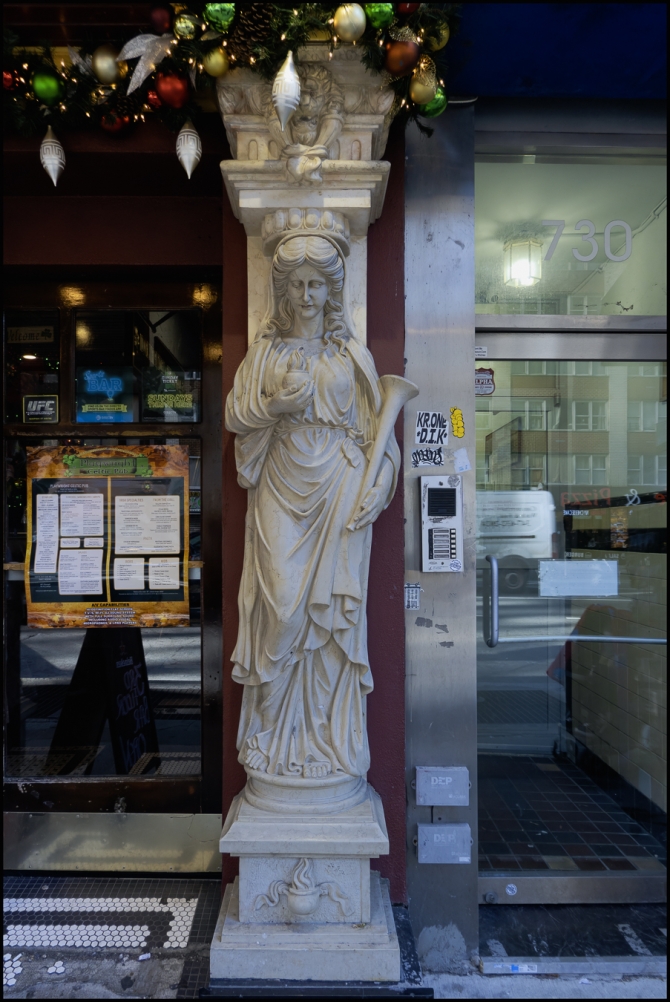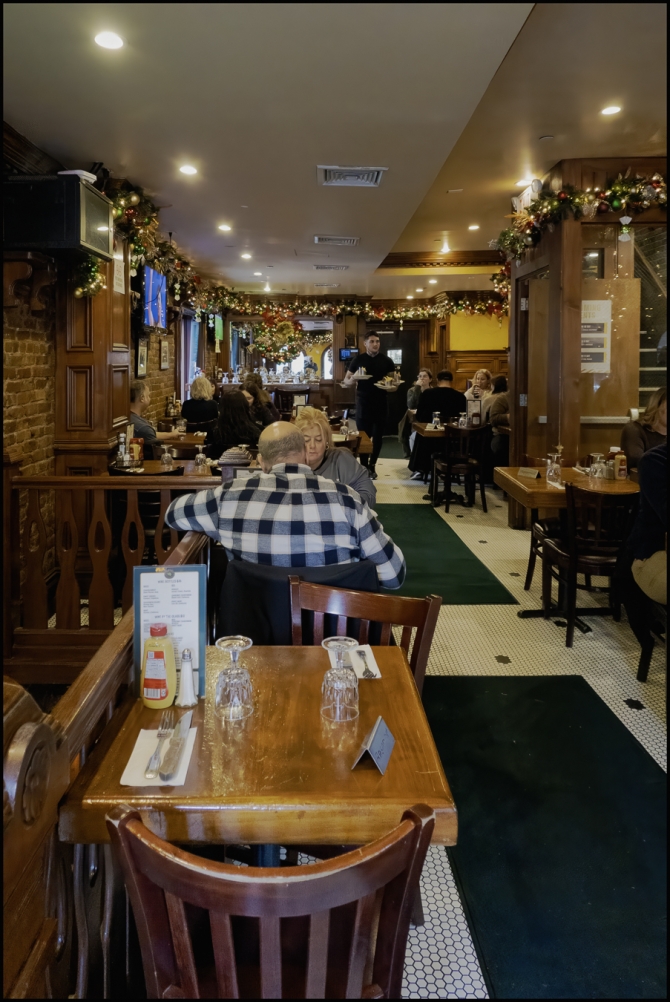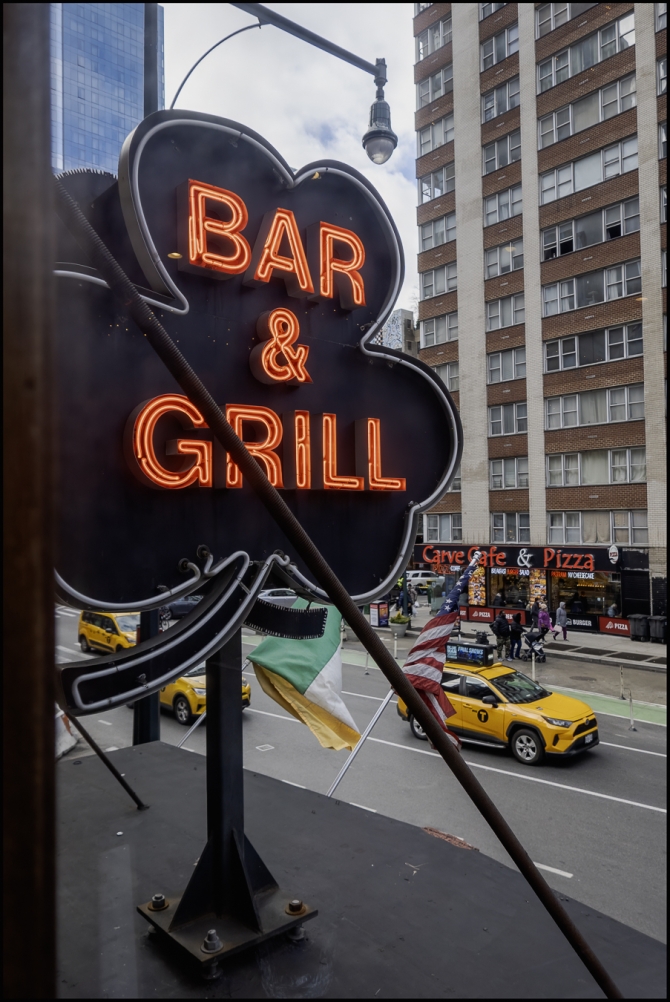I intended my make my first stop to be at Bryant Park, but first a picture (above) taken right outside Grand Central Terminal
Bryant Park is a 9.6-acre (3.9 ha), privately managed public park in the New York City borough of Manhattan. It is located between Fifth Avenue and Avenue of the Americas (Sixth Avenue) and between 40th and 42nd Streets in Midtown Manhattan. The eastern half of Bryant Park is occupied by the Main Branch of the New York Public Library. The western half contains a lawn, shaded walkways, and amenities such as a carousel, and is located entirely over an underground structure that houses the library’s stacks. The park hosts several events, including a seasonal “Winter Village” with an ice rink and shops during the winter.
The first park at the site was opened in 1847 and was called Reservoir Square due to its proximity to the Croton Distributing Reservoir. Reservoir Square contained the New York Crystal Palace, which hosted the Exhibition of the Industry of All Nations in 1853 and burned down in 1858. The square was renamed in 1884 for abolitionist and journalist William Cullen Bryant. The reservoir was demolished in 1900, and the New York Public Library’s main branch was built on the site, opening in 1911. Bryant Park was rebuilt in 1933–1934 to a plan by Lusby Simpson. After a period of decline, it was restored in 1988–1992 by landscape architects Hanna/Olin Ltd. and architects Hardy Holzman Pfeiffer Associates, during which the park was rebuilt, and the library’s stacks were built underneath. Further improvements were made in the late 20th and early 21st centuries. (Wikipedia)
The above mentions: “a period of decline”. That doesn’t quite tell the full story. By the 1960s, Bryant Park had deteriorated badly. When I arrived in New York in 1974 it had been taken over by drug dealers and the homeless. In was considered to be somewhere that ordinary people and visitors should avoid.
The park was substantially renovated and rebuilt during the 1980s and re-opened to acclaim in the early 1990s. The dramatic improvement in the park led to an equally dramatic rise in real estate values in the surrounding area. By 1993, the area had become a highly desirable office area, and formerly vacant office space around the park was being filled quickly. The Park is used mostly as a passive recreation space. It is one of the world’s busiest public spaces. Now more than 12 million people per year visit the park and enjoy gardens with seasonal displays, free daily amenities, cultural programming, exercise classes, and much more!
The Winter Village
Plastic igloos where you can sit and eat or have a drink while protected from New York winters.
Statue of
William Earl Dodge by
by John Quincy Adams Ward. It was cast in 1885 and dedicated on October 22 of that year. The statue was initially installed in Herald Square, having been financed by Dodge’s admirers and friends. It was moved to Bryant Park in 1941 and was renovated in 1992 by the Bryant Park Restoration Corporation.
The Josephine Shaw Lowell Memorial Fountain, a memorial to
Josephine Shaw Lowell, a social worker active in the late 19th century. The fountain was designed by architect
Charles A. Platt and dedicated in 1912.
Coins in the fountain.
One of the numerous decorative planters scattered around the park.
Taken with a Sony RX100 MVII








































